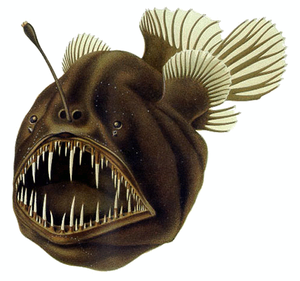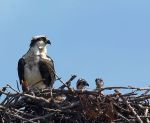Well, well, well, Arnold Schwarzenegger has a love child. As a newlywed I shook my head when I heard the news and said “surely they’re not all like that.”
I decided to investigate to find out if there are any truly monogamous species out in the blue sea.
Also, I did watch March of the Penguins. As much as I admire the Emperor penguins for staying together to raise their young, they are not lifelong monogamists. Each season they usually procreate with a different partner.
However, one group of anglerfish, from the family Ceratiidae, has a very faithful male (a little to clingy though if you ask me). Highly sensitive olfactory adaptations have evolved in these male anglerfish that allow them to smell out females. This is very useful as they are in the desolate landscape of the deep sea. Once they sniff out a mate, the males basically bite into the flesh of the females and fuse their mouth into her bloodstream. After that, these males will degenerate and simply be a source of sperm for the females.
Without this process the males would not be able to survive. The males of this family do not grow ’em tall due to the lack of a alimentary canal, essential for feeding. The males are scientifically smaller than the females and several males can be attached to one female. It took researchers some time to uncover the mystery that is the male anglerfish. For the longest time they couldn’t figure out why they were only collecting females specimens. But, unbeknown-st to them, the males were there too.
Related articles
- Deep-Sea Anglerfish LED Light (neatorama.com)

















What people are saying …